Search Results
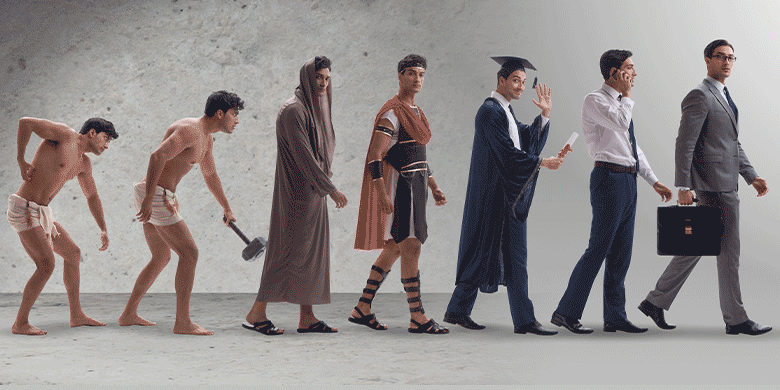
24 November, 2023
The Evolution of Promotional Apparel
Whether it's a company t-shirt, a custom-designed baseball cap, or even a hoodie emblazoned with a brand's logo, apparel has become a powerful tool for businesses to increase brand awareness, foster customer loyalty, and generate revenue. But how did we get here? What are the origins of this prevalent advertising strategy, and how has it evolved over time to suit the changing dynamics of culture, technology, and fashion? Let us look at the history of promotional apparel, tracing its roots and examining key shifts and trends that have shaped it into its modern-day essential. So, fasten your seat belts as we dive into the fascinating evolution of promotional apparel. This story is as much about marketing and branding as it is about cultural shifts and technological advancements.
The Beginnings: Pre-20th Century
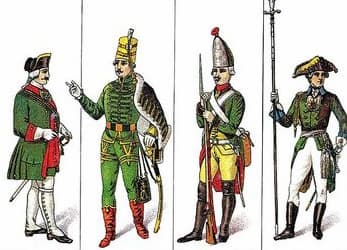
Before promotional apparel became a commercial tool, clothing had long been used as a means of identification. In military settings, uniforms were essential for distinguishing between allies and enemies, and for creating a sense of unity among soldiers. Various regiments and divisions often had their unique colours, insignias, or other defining features on their uniforms.
Religious garments also served as identifiers. Whether it was the Christian cassock or Jewish prayer shawl, clothing became an external marker of internal belief systems. It created a strong sense of community among believers while marking them apart from those outside the faith.
The use of clothing for identification purposes in these contexts laid the groundwork for the concept of wearing something that signifies belonging to a particular group or ideology—something that's central to modern promotional apparel.
As time progressed, the concept of identification expanded beyond just military and religious settings. Tradesmen and guilds began incorporating unique logos or insignias into their uniforms to distinguish themselves from competitors. This wasn't promotional apparel in the way we think of it today, but it was a step towards that. The insignia or logo signified a certain quality, skill, or service level that a consumer could expect from the wearer.
This early form of branding laid the foundation for businesses to understand the potential power of wearable identifiers. It would take a few more years, and the advent of mass manufacturing and marketing, for this seed of an idea to grow into the promotional apparel industry we know today.
1920s to 1950s: The Birth of Branded Merchandise
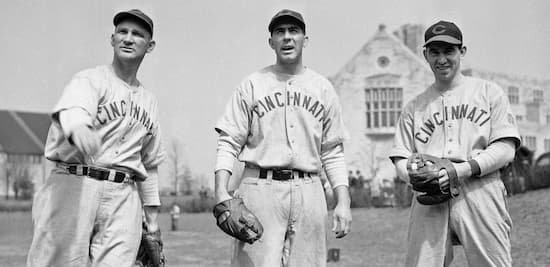
This was a transformative period in the history of promotional apparel. With mass production capabilities and growing consumer culture, branded merchandise started to take off. Sports teams were among the earliest to leverage this opportunity. Teams began mass-producing jerseys, scarves, and other apparel featuring their logos and colours. This merchandise was sold at stadiums and stores, creating a new revenue stream for the teams and promoting fan loyalty. The fans wore these items as badges of honour and identity, creating a ripple effect of free advertising and building a sense of community around the brand.
T-shirts and baseball caps became staple items during this period. The T-shirt, initially an undergarment, rose to prominence as an outerwear item that was perfect for imprinting logos or slogans. This garment became a blank canvas for businesses, advocacy groups, and artists alike. Baseball caps, already popular in the sporting world, were also identified as prime real estate for branding. These items were cheaper to produce, allowed for easy and varied customisation, and most importantly, were regularly used by people in public, ensuring high visibility.
Companies with strong brand identities, like Coca-Cola and Disney, quickly recognised the potential. Coca-Cola began using clothing to advertise their brand in a way that went beyond just its iconic bottles. T-shirts and caps featuring the Coca-Cola logo became synonymous with the brand's image of youthful energy and universal appeal. Disney, too, capitalised on their character merchandising to create an array of apparel featuring their beloved characters like Mickey Mouse. Such merchandise's success helped fortify the brand's presence in consumers' daily lives beyond just their core products or services.
This era laid the groundwork for promotional apparel as an industry, and the strategies and concepts that originated then are still relevant today.
1960s: A Cultural Revolution
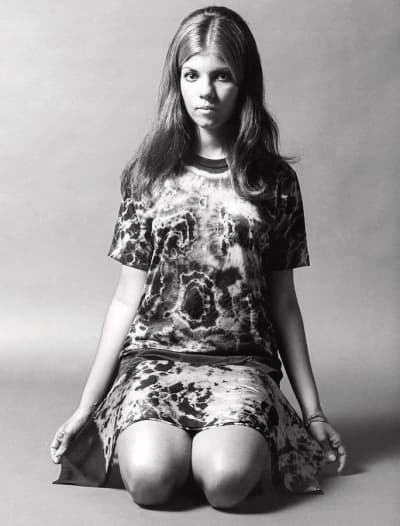
This era was marked by significant social and cultural upheavals, and the world of apparel was no exception. The tie-dye trend turned the humble T-shirt into a canvas for individual expression and cultural statements. What started as a counter-culture fashion statement soon became popularised, and businesses took notice. Companies began to embrace the tie-dye technique as a novel way to differentiate themselves, especially targeting the younger, more socially conscious demographic. In doing so, the T-shirt evolved from a promotional item to an emblem of cultural identity.
Music played a pivotal role in the cultural shifts of the 1960s, and musicians and bands seized the opportunity to produce branded apparel as merchandise. Tour T-shirts, band logos, and album art began to appear on apparel, creating an additional revenue stream for artists and a way for fans to visibly express their support. This bolstered the artist's brand and turned fans into walking advertisements. Today, band and artist merchandise remains a massive industry, and it all started during this transformative decade.
The '60s also saw the rise of the slogan T-shirt as a powerful tool for advocacy and branding. Messages ranging from political slogans to catchy brand taglines started appearing on the front and back of T-shirts. This made the wearer an active participant in promoting a cause or a brand, turning them into a mobile billboard of sorts. Companies quickly adapted to this trend, using them to condense their brand message into something immediately accessible and highly visible.
The 1960s were instrumental in shaping the multifaceted role that promotional apparel plays today. From self-expression and fan loyalty to advocacy and brand messaging, the decade opened up new avenues that go beyond mere advertising.
1970s: Sports and Fashion Fusion
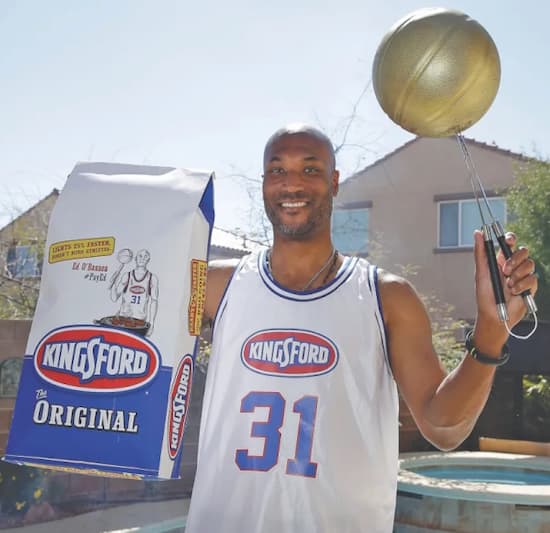
In the 1970s, a significant shift occurred as sportswear transitioned from being solely for athletic use to becoming an acceptable form of casual wear. This trend was fueled by the broader cultural emphasis on leisure and comfort. Businesses quickly seized the opportunity, recognising that promotional sportswear could have a dual role: functional athletic and fashionable casual wear. The decade saw a surge in branded sweatshirts, joggers, and sneakers that were designed not just for the gym but also for everyday use.
The 1970s were a watershed era for sports marketing. Athletes started to engage in brand endorsements, offering their names and likenesses to promote various products. In return, brands produced customised athletic wear for these sports stars. This strategy resulted in a mutually beneficial relationship: athletes received lucrative deals, and brands received unparalleled visibility and credibility from these high-profile endorsements.
This decade also saw the introduction of new forms of promotional apparel that have since become staples: polo shirts and tracksuits. Polo shirts struck the perfect balance between casual and formal, making them ideal for corporate events and golf outings. Tracksuits, often made in bright, eye-catching colours, became popular for their comfort and versatility. Both of these apparel options offered large, easily visible spaces for branding, and they soon became popular choices for companies aiming to expand their promotional reach while keeping up with fashion trends.
The 1970s continued to evolve, tapping into cultural shifts around sportswear and celebrity endorsements. The decade set the stage for the modern era of branded apparel, demonstrating that promotional clothing could be as functional and fashionable as it was effective for marketing with the right strategy.
1980s: The Era of Excess

This era was characterised by big hair, personalities, and logos. It was a time when "more is more." The bold and flashy aesthetic of the 1980s saw logos becoming oversized, often placed front and centre on clothing. Companies weren't shy about their branding; they made it a focal point. This conspicuous branding aligned well with the cultural atmosphere of the time, where loud and extravagant styles were in vogue.
The 1980s also marked the rise of promotional sweatshirts and hoodies. Much like the casual sportswear of the 1970s, sweatshirts and hoodies were prized for their comfort and versatility. Hoodies, in particular, gained cultural cachet as they were adopted by various subcultures, from hip-hop to skateboarding. Their large surface area made them an ideal canvas for branding. Many companies produced special edition sweatshirts or hoodies, sometimes in collaboration with popular artists or designers of the time, making them highly sought-after collectibles.
It was also not just about style but also a focus on substance. Consumers began demanding more from their clothing, so the industry responded with quality, durable fabrics. This development had a significant impact. Companies were no longer limited to producing cheap, disposable items meant for short-term use. Instead, they could invest in high-quality items that recipients would actually want to keep and wear repeatedly, thus increasing the lifespan and reach of their branding efforts.
The 1980s continued influencing the trends and choices that would come in later decades. Its focus on bold branding, comfortable yet stylish apparel, and durable, quality fabrics set a new standard in the industry. With these developments, promotional apparel moved closer to what we recognise today, becoming an integral part of fashion and advertising.
1990s: Subcultures and Niche Markets
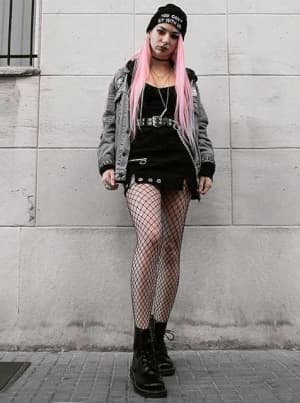
The 1990s was a decade of fragmentation and specialisation, where subcultures like grunge and hip-hop gained mainstream attention. These subcultures not only had their own distinct styles but also adopted certain branded apparel as part of their look. Bands and musicians from these genres capitalised on their influence by creating their own lines of promotional clothing, thus helping to propagate their brand and solidify their cultural impact. Whether it was a Nirvana T-shirt or a Wu-Tang Clan hoodie, it became more than just an advertisement; it became a form of cultural expression.
With the rise of these subcultures, apparel became a way to identify oneself as a part of a particular group, tribe, or mindset. For instance, sporting a Harley-Davidson leather jacket wasn't just about liking motorcycles; it symbolised a rebellious and free-spirited lifestyle. Fans felt a sense of community and allegiance when wearing merchandise from their favourite bands, sports teams, or brands.
The 1990s was also the decade when environmental consciousness started to gain ground. This global awareness sparked a trend in eco-friendly promotional apparel. Companies began exploring sustainable materials like organic cotton or recycled polyester to create their merchandise. Their emergence was not just a marketing tactic but also a response to a growing demand from consumers for more responsible and sustainable options. Brands that could advertise their message and environmental consciousness had a significant edge, especially among younger demographics who were becoming increasingly eco-aware.
The 1990s were pivotal in shaping it into a form of identity, a way of belonging, and a reflection of societal values such as environmental responsibility. The impact of subcultures, the focus on identity, and the emergence of eco-friendly options all combined to make the 1990s a decade of significant innovation, pushing the boundaries of what promotional products could achieve.
2000s: The Digital Age

The advent of the internet and the proliferation of online platforms fundamentally changed the way promotional apparel was produced and distributed. Websites like Cafepress, Zazzle, and later, Teespring, allowed even small brands and individuals to design, produce, and sell custom-branded apparel without the need for bulk orders or inventory. This made it accessible for everyone, from multinational companies to garage bands to YouTubers. The streamlined distribution channels also enabled brands to reach global audiences more easily than ever before.
One of the most significant shifts brought about by digital technology was the rise of on-demand production. Unlike the pre-digital days, when companies had to make large orders based on speculative demand, the 2000s allowed for a much more flexible approach. Businesses could offer customers the option to personalise various aspects of their apparel—like colour, design, and even fabric—through online interfaces. This form of consumer-driven customisation coupled with on-demand production drastically reduced overheads, waste, and the risks associated with unsold stock.
The 2000s were the golden era of viral content. With the rise of social media platforms like Facebook, Twitter, and later, Instagram, viral slogans and memes began to make their way onto promotional apparel. Brands quickly realised the potential of these social phenomena for promotion. T-shirts emblazoned with popular internet sayings or memes had a built-in virality that was a marketer's dream. Companies could leverage the inherent shareability of these items to gain rapid and widespread exposure. From iconic memes like "I Can Has Cheezburger?" to viral slogans like "Yes We Can," the internet became a fertile ground for sourcing new and resonant content for promotional apparel.
The 2000s stand as a watershed period, introducing changes that not only leveraged technology for production and distribution but also harnessed the cultural power of the internet.
2010s: Experience and Personalisation

The 2010s marked a significant shift, influenced heavily by technological advances and changes in consumer preferences. This decade was characterised by a strong focus on personalised experiences, ethical considerations, and smart use of data analytics.
It saw the rise of pop-up shops as a go-to marketing strategy, especially for clothing brands. Pop-up shops are temporary, often event-focused retail spaces that sell merchandise for a short period. These spaces work as a double-edged sword: they serve as a unique physical location where customers can directly interact with a brand and create a sense of urgency since they are time-limited. This strategy generates buzz and offers consumers a unique 'experience,' thereby adding value to the product. This could be a concert t-shirt sold only during the length of the tour, or a seasonal hoodie with a limited print run.
Limited releases also became a staple in this decade. Brands realised that scarcity adds value, making customers more eager to purchase and treasure a "limited edition" item. This approach has even been used to rejuvenate older, less popular brands, giving them a sense of renewed exclusivity and desirability.
Data analytics took a front seat during the 2010s. Brands began harnessing the power of data to create personalised experiences for their customers. From recommendation algorithms to predictive analytics, data was used to understand consumer behaviour like never before. For promotional apparel, this meant using data to identify which types of items were most likely to resonate with a specific audience and even individual consumers.
This level of data-driven customisation meant brands could tailor their promotional apparel broadly and to specific audience segments. For example, suppose a sports brand discovered through analytics that most of its audience were runners. In that case, it might produce high-performance running gear as part of its lineup, perhaps even down to the colour and design most likely to attract that demographic.
This decade also marked an increased awareness and concern for ethical and sustainable practices, especially among younger consumers. This trend had a significant impact. Brands started focusing more on producing clothing that was not just stylish but also ethically made and environmentally sustainable. For example, organic cotton t-shirts, recycled polyester hoodies, and apparel made through fair labour practices began to appear more frequently as promotional items.
Not only did this approach cater to a consumer demand for more ethical options, but it also worked as a powerful marketing tool. It sends a strong message about its values, attracting customers who prioritise such considerations. This has been especially effective in sectors where competition is fierce, and a brand’s ethical stance can become a strong differentiator.
2020s: The Future and Beyond

As we move through the 2020s, the promotional apparel industry is poised again for significant transformations. Technological innovations, an even greater emphasis on sustainability, and the adoption of new printing techniques will redefine how it is created, marketed, and consumed.
We are seeing the rise of smart apparel - clothing items integrated with technology to provide additional functions or features. These can range from simple elements like RFID tags for easier inventory management to more complex capabilities like embedded health monitoring sensors. Smart technology offers a plethora of possibilities. For instance, brands could produce t-shirts with built-in LEDs that light up in coordination with a concert or sports jerseys that track and transmit biometric data to a paired smartphone app.
Smart apparel adds an element of 'coolness' and modernity and deepens the level of interaction between the brand and the consumer. For example, a brand could offer a limited edition smart hoodie that, through its integrated technology, unlocks special content or offers on the brand's app. This takes brand engagement to a whole new level, going beyond just the physical item to create a holistic experience that extends into the digital realm.
The advances in printing technology, specifically direct-to-garment (DTG) printing, have opened up new frontiers in apparel customisation. Unlike traditional printing methods that can be limiting in terms of the complexity and colours of the design, DTG allows for highly detailed and full-colour printing directly onto the fabric. This means brands can now offer intricately designed and highly customised products that were previously difficult or expensive to produce.
DTG printing has the added advantage of being more cost-effective for small batches, thus allowing brands to experiment with limited runs of highly specialised designs. This aligns perfectly with the trend of hyper-personalisation, as companies can now produce to niche consumer interests or even individual preferences. Imagine, for example, a fan being able to buy a band's tour t-shirt that also features their name and the specific concert location they attended, all rendered in high-quality, durable print.
The trend towards ethical and sustainable clothing continues to grow stronger in the 2020s, shaping the landscape accordingly. But it's not just about organic materials or ethical manufacturing practices anymore; the focus has expanded to include durability and longevity. Consumers are increasingly interested in high-quality items made to last, reducing the need for frequent replacements and decreasing the overall environmental impact.
This means brands are leaning towards creating higher-quality, more durable items as part of their marketing strategies. In doing so, they meet consumer demands for sustainability and reinforce a message of quality and reliability associated with their brand. They can become treasured items that recipients will likely keep and use for years, further extending the brand’s reach and impact.
In summary, the 2020s are ushering in an era where technology, personalisation, and sustainability are converging to redefine the landscape. As smart clothing technology becomes increasingly sophisticated, printing techniques allow for greater customisation, and a focus on quality and sustainability becomes imperative, brands have an unprecedented opportunity to engage consumers in more meaningful and enduring ways.
The PromotionsOnly Team

